Europe Inland Water Freight Transport Market Size
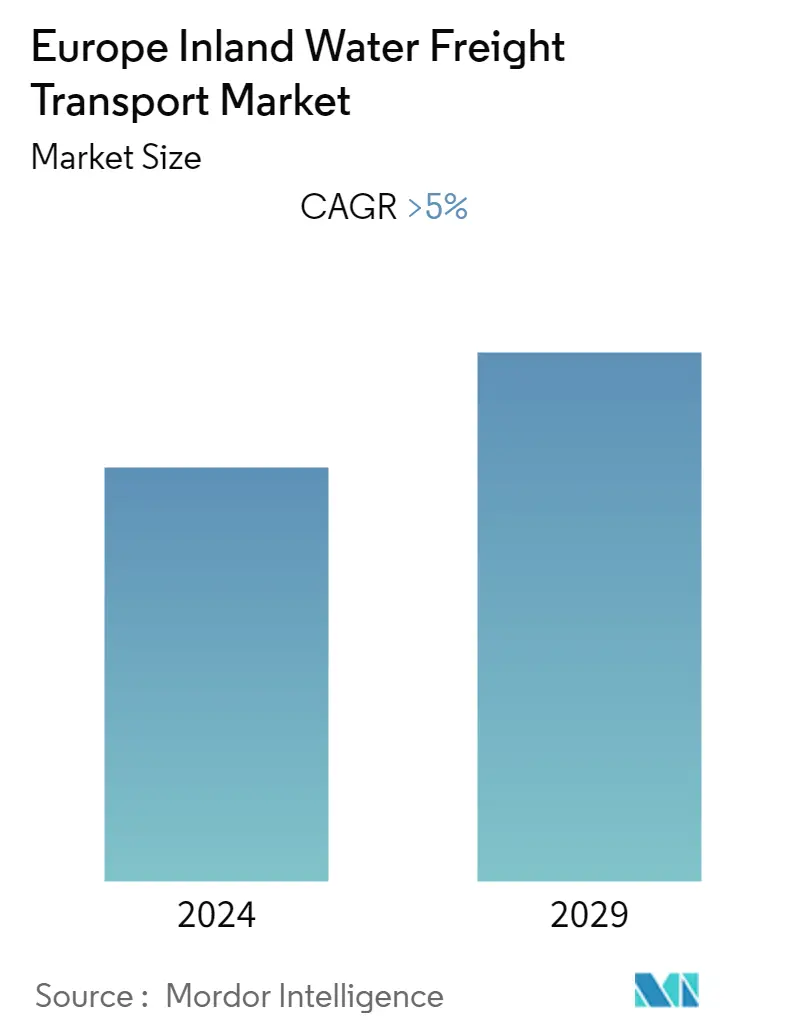
| Study Period | 2020 - 2029 |
| Base Year For Estimation | 2023 |
| Forecast Data Period | 2024 - 2029 |
| CAGR | 5.00 % |
| Fastest Growing Market | Europe |
| Market Concentration | Low |
Major Players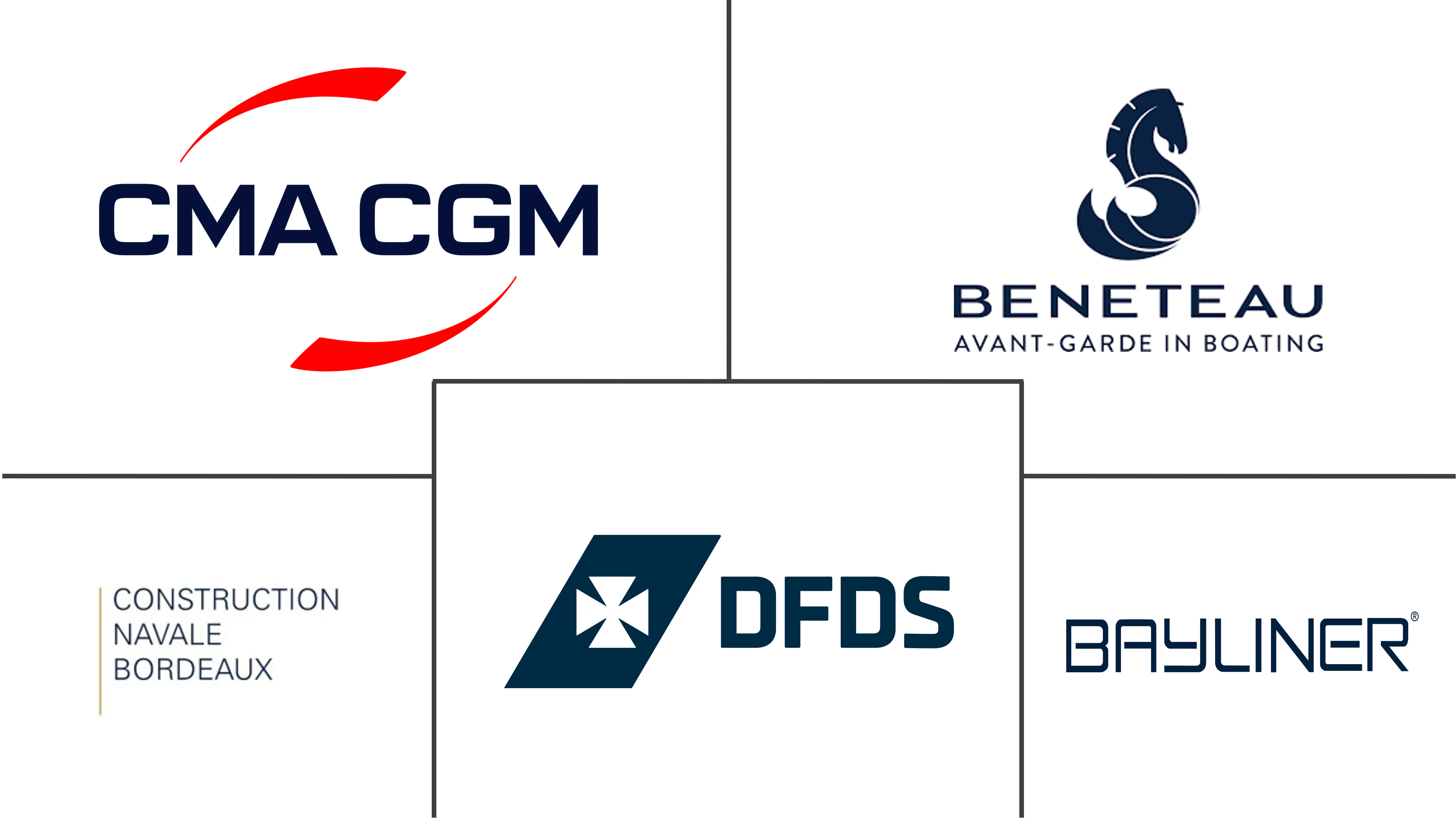
*Disclaimer: Major Players sorted in no particular order |
Europe Inland Water Freight Transport Market Analysis
The size of Europe Inland Water Freight Transport Market is USD 10.2 billion in the current year and is anticipated to register a CAGR of over 5% during the forecast period.
- The inland water freight transportation market comprises of companies (organizations, sole proprietors, and partnerships) that offer inland water freight transportation of cargo on lakes, rivers, or intracoastal waterways. Only items and services that are exchanged between parties or sold to final customers are covered.
- For the transportation of products in Europe, inland waterway travel is essential. Hundreds of cities and industrial areas are connected by more than 37,000 kilometres of waterways. A network of waterways connects 13 Member States. It is possible for inland waterway transportation to increase its modal share significantly. Inland waterway transportation is distinguished from other means of transportation by its dependability, energy efficiency, and significant capacity for greater exploitation. These other routes of transportation are frequently plagued by congestion and capacity issues.
- A cost-effective alternative to road and rail transportation is inland canal transportation. In terms of energy usage and noise emissions, it offers a particularly eco-friendly solution. It uses around 17% less energy per km/ton of freight than road transport and 50% less than rail transport. A high level of safety is also guaranteed by inland waterway transportation, particularly when it comes to the delivery of hazardous materials. In densely populated areas, it also helps to relieve overcrowded road networks of traffic.
Europe Inland Water Freight Transport Market Trends
This section covers the major market trends shaping the Europe Inland Water Freight Transport Market according to our research experts:
Digitization of inland-waterway transport
Within Europe, inland-waterway transport (IWT) is important for the movement of goods. This mode of transportation has a number of benefits, including safety, environmental friendliness, and the release of road capacity. A more adaptable logistics industry with more alternatives for transportation will result from the digitization of inland waterway transportation. Long-term, this will have a positive ripple impact on employment, consumption, and manufacturing, strengthening the European economy as a whole. Additionally, it is consistent with the EU's strategy to digitize markets wherever possible, known as the Digital Single Market Strategy. Digital Inland Waterway Area (DINA) is a concept to interconnect information between IWT's stakeholders and with other transport modes.
DINA architecture is:
Adding more (real-time) data to RIS will increase their functionality, interoperability, and usability for barge operators using new on-board e-IWT tools and apps.
Barge operators can manage their own data and operations thanks to a data platform. This should make it possible for barge operators to carefully share data with other parties, including public authorities (for reporting needs), (inland) ports, and terminals.
Integration with shippers' and LSP's booking and transport management platforms should improve IWT's visibility and integration into the entire logistics chain, which includes different modalities.
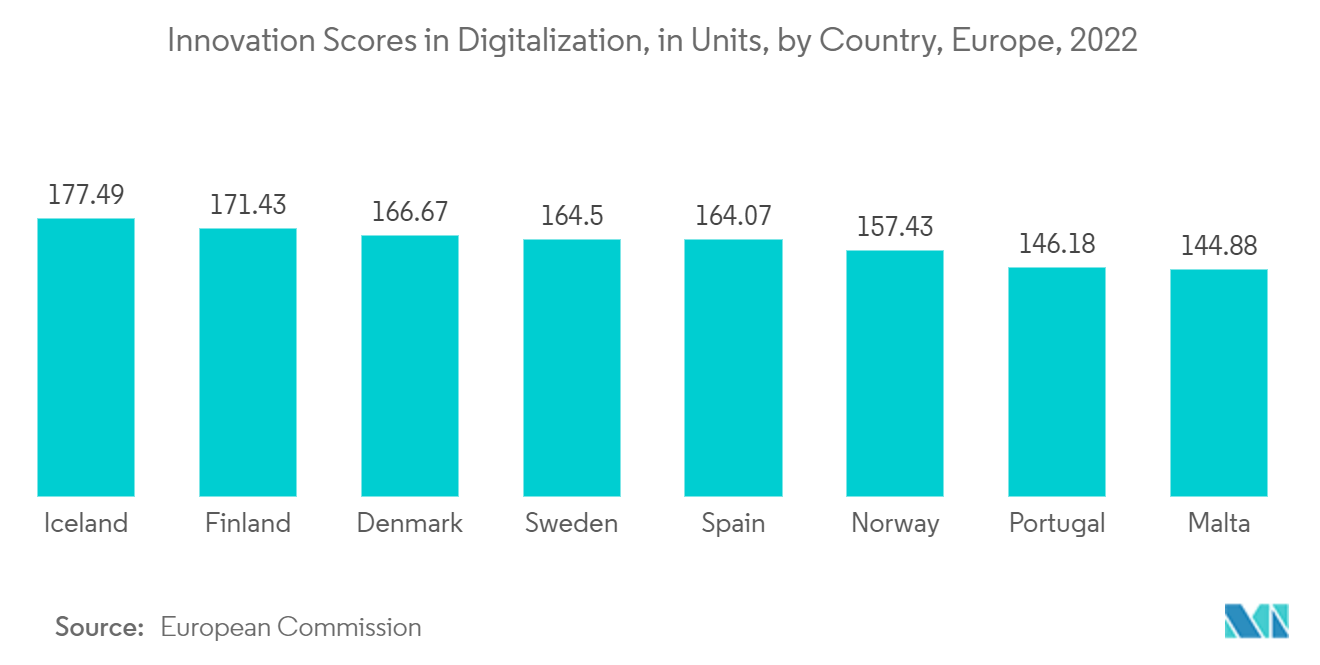
Use of alternative fuels for emission control
The European Commission is aiming to enhance the transition of freight transport to rail and inland shipping in order to minimise CO2 emissions from EU transportation. This objective is reflected in the European Green Deal and the Sustainable and Smart Mobility Strategy, two recent Commission policies that also lay out the actions required to enhance the use of IWT and short sea shipping. The industry must overcome significant obstacles and develop into a digital, greener, and more resilient sector in order to fully fulfill its function.
Future replacements for Heavy Fuel Oil (HFO) and Marine Diesel Oil(MDO) could play a key role in lowering emissions below necessary levels. Additionally, it is predicted that 30-50 million tonnes of fuel (LSF) be consumed annually in the ECAs, and that number will rise as more areas are added to the ECAs in the future (DNV 2015). The introduction of alternative, low carbon fuels can fulfill both the need for low sulphur fuels as well as the requirement to reduce GHG emissions, provided that these fuels and the required technologies are delivered at competitive price levels.
liquefied natural gas (LNG), electricity, biodiesel, and methanol are the alternative fuels that are most frequently taken into consideration. Liquefied petroleum gas (LPG), dimethyl ether (DME), biomethane, synthetic fuels, hydrogen (especially for use in fuel cells), hydrogenation-derived renewable diesel (HDRD), and pyrolysis oil are further fuels that could be used in the future. Additionally, it is possible to adhere to the rules and promote the switch to alternative fuels by using fuels.
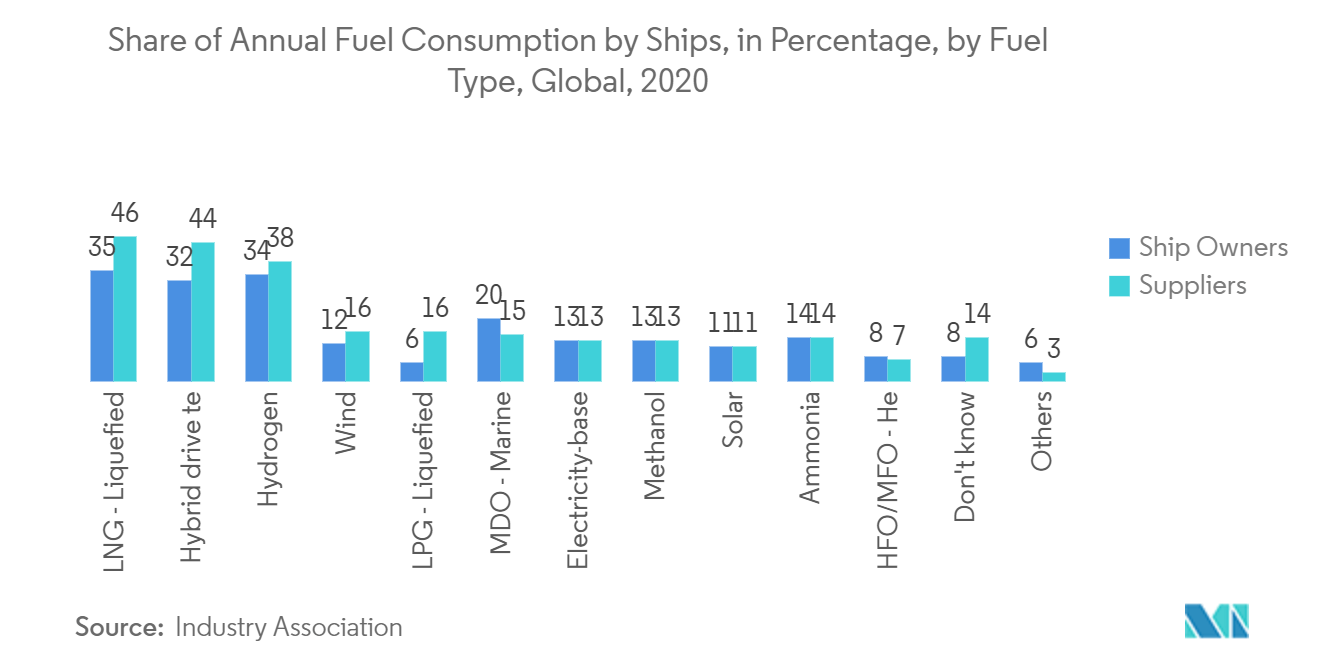
Europe Inland Water Freight Transport Industry Overview
Viking Line, Rhenus Group, Mediterranean Shipping Company S A, Construction Navale Bordeaux, MEYER WERFT GmbH & Co., KG, Bayliner, European Cruise Service, and Euro RIJN B,V are market participants for Inland Water Freight Transport in Europe. The competition amongst service providers is further heightened by the strict regulatory requirements that must be met. Businesses participate in M&A transactions to develop their product lines and expand regionally.
To increase market share, manufacturers and service providers prioritise customer happiness, capacity growth, and fleet modernization. The enterprises are able to thrive in this fiercely competitive market by keeping constant touch with shipping companies throughout the region.
Europe Inland Water Freight Transport Market Leaders
-
Bayliner
-
Bénéteau Group
-
CMA CGM Group
-
Construction Navale Bordeaux
-
DFDS
*Disclaimer: Major Players sorted in no particular order
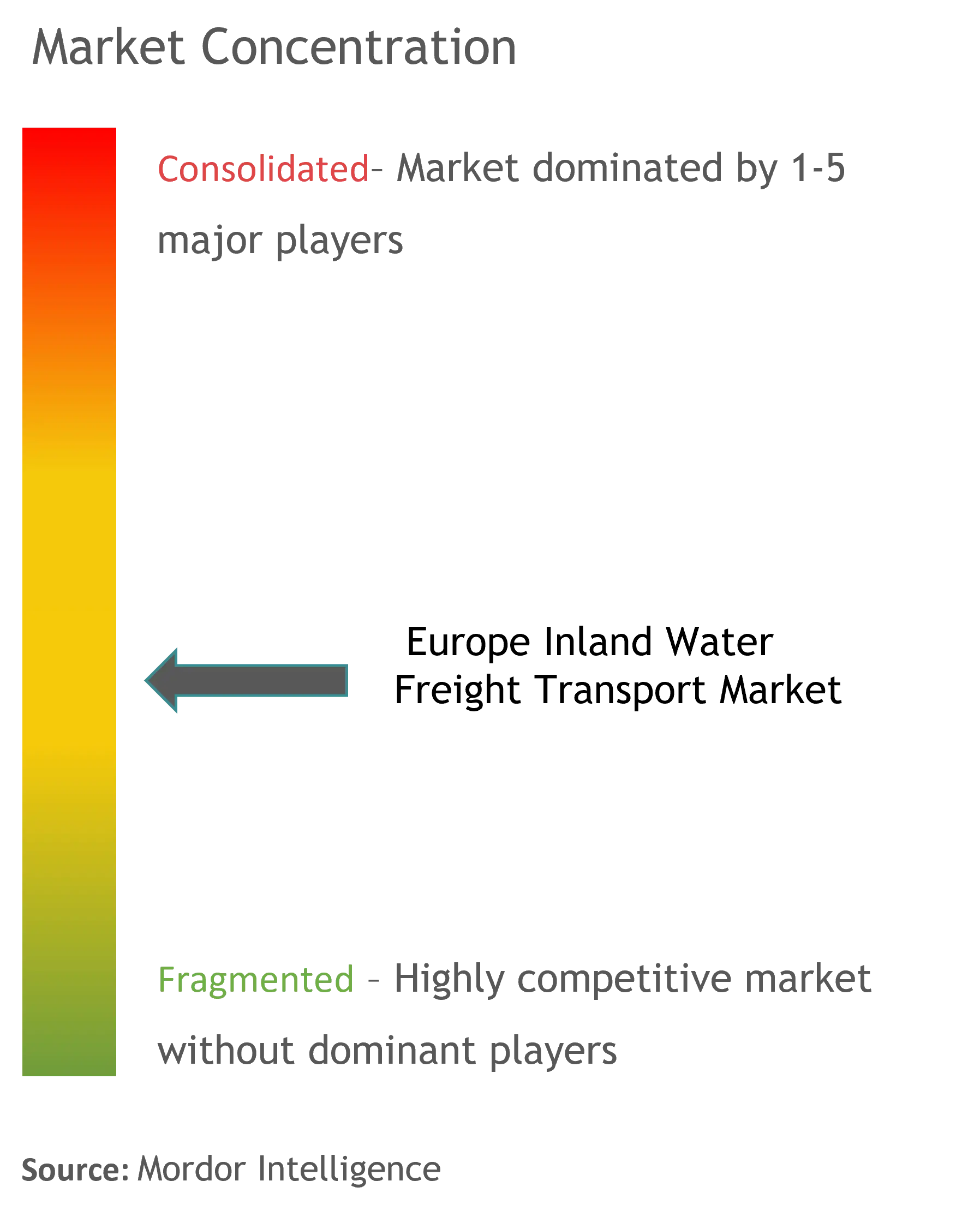
Europe Inland Water Freight Transport Market News
- October 2022: The European Commission (EC) has approved a EUR 22.5 million (USD 23.91 million) Dutch scheme to support the shifting of freight transport from road to inland waterways and rail. The new scheme is part of an initiative to encourage a greener mode of transport. Designed to run until the end of January 2026, the scheme will enable shippers and logistics operators to secure non-refundable grants for cutting down external costs, including pollution, noise, congestion, and accidents, using inland waterways and rail.
- June 2022: Rhenus PartnerShip is investing in the future of the entire shipping sector with its sustainable articulated push barge units for inland waterway services called Rhenus Mannheim I+II and Rhenus Wörth I+II - and it is providing relief for the environment by using alternative fuels. The signing ceremony in June marked the starting point for the construction phase of the Rhenus Mannheim I+II and Rhenus Wörth I+II articulated push barge units. The new, low-emission flagships of the Rhenus fleet are being built at the Den Breejen shipyard in the Netherlands. The hybrid shipping units are due to be completed in September 2023 and the first trials should take place in the following month.
Europe Inland Water Freight Transport Market Report - Table of Contents
1. INTRODUCTION
- 1.1 Market Definition and Scope
- 1.2 Study Assumptions
2. RESEARCH METHODOLOGY
3. EXECUTIVE SUMMARY
4. MARKET DYNAMICS AND INSIGHTS
- 4.1 Current Market Scenario
-
4.2 Market Dynamics
- 4.2.1 Drivers
- 4.2.2 Restraints
- 4.2.3 Opportunities
- 4.3 Value Chain/Supply Chain Analysis
- 4.4 Technological Advancements
- 4.5 Government Regulations and Key Initiatives
-
4.6 Industry Attractiveness - Porter's Five Forces Analysis
- 4.6.1 Bargaining Power of Suppliers
- 4.6.2 Bargaining Power of consumers/ Buyers
- 4.6.3 Threat of New Entrants
- 4.6.4 Threat of Substitute Products
- 4.6.5 Intensity of Competitive Rivalry
- 4.7 Insights into Transshipment Trade
- 4.8 Insights into Containerized and Non-containerized Shipments
- 4.9 Freight Rates and Maritime Transport Costs
- 4.10 Insights into Intermodal/Container Utilization
- 4.11 Demand-Supply Analysis
- 4.12 Impact of COVID-19 on the Market
5. MARKET SEGMENTATION
-
5.1 Type of Transportation
- 5.1.1 Liquid Bulk Transportation
- 5.1.2 Dry Bulk Transportation
-
5.2 Vessel Type
- 5.2.1 Cargo Ships
- 5.2.2 Container Ships
- 5.2.3 Tankers
- 5.2.4 Other Vessel Types
-
5.3 Geography
- 5.3.1 Netherland
- 5.3.2 Germany
- 5.3.3 Begium
- 5.3.4 France
- 5.3.5 Romania
- 5.3.6 Bulgaria
- 5.3.7 Rest of Europe
6. COMPETITIVE LANDSCAPE
- 6.1 Market Concentration Overview
-
6.2 Company Profiles
- 6.2.1 Bayliner
- 6.2.2 Beneteau Group
- 6.2.3 CMA CGM Group
- 6.2.4 Construction Navale Bordeaux
- 6.2.5 DFDS
- 6.2.6 EUROPEAN CRUISE SERVICE
- 6.2.7 EURO-RIJN B.V.
- 6.2.8 MEYER WERFT GmbH & Co., KG
- 6.2.9 MSC Mediterranean Shipping Company S.A
- 6.2.10 Rhenus Group*
- *List Not Exhaustive
7. FUTURE OF THE MARKET
8. APPENDIX
** Subject To AvailablityEurope Inland Water Freight Transport Industry Segmentation
Any transportation of goods made with inland waterways vessels and completed entirely or in part on navigable interior waterways is referred to as inland water freight transport. Inland waterways transport refers to the transportation of goods made entirely on navigable inland rivers employing seagoing vessels.
The Europe Inland Water Freight Transport Market is segmented by Type of Transportation (Liquid Bulk Transportation, Dry Bulk Transportation), By Vessel Type (Cargo Ships, Container Ships, Tankers, Other Vessel Types), and by Geography (Netherlands, Germany, Belgium, France, Romania, Bulgaria, and Rest of Europe). The report offers market size and forecasts for the Europe Inland Water Freight Transport Market in value (USD million) for all the above segments.
| Type of Transportation | Liquid Bulk Transportation |
| Dry Bulk Transportation | |
| Vessel Type | Cargo Ships |
| Container Ships | |
| Tankers | |
| Other Vessel Types | |
| Geography | Netherland |
| Germany | |
| Begium | |
| France | |
| Romania | |
| Bulgaria | |
| Rest of Europe |
Europe Inland Water Freight Transport Market Research FAQs
What is the current Europe Inland Water Freight Transport Market size?
The Europe Inland Water Freight Transport Market is projected to register a CAGR of greater than 5% during the forecast period (2024-2029)
Who are the key players in Europe Inland Water Freight Transport Market?
Bayliner, Bénéteau Group, CMA CGM Group, Construction Navale Bordeaux and DFDS are the major companies operating in the Europe Inland Water Freight Transport Market.
Which is the fastest growing region in Europe Inland Water Freight Transport Market?
Europe is estimated to grow at the highest CAGR over the forecast period (2024-2029).
What years does this Europe Inland Water Freight Transport Market cover?
The report covers the Europe Inland Water Freight Transport Market historical market size for years: 2020, 2021, 2022 and 2023. The report also forecasts the Europe Inland Water Freight Transport Market size for years: 2024, 2025, 2026, 2027, 2028 and 2029.
Europe Inland Water Freight Transport Industry Report
Statistics for the 2024 Europe Inland Water Freight Transport market share, size and revenue growth rate, created by Mordor Intelligence™ Industry Reports. Europe Inland Water Freight Transport analysis includes a market forecast outlook to 2029 and historical overview. Get a sample of this industry analysis as a free report PDF download.



